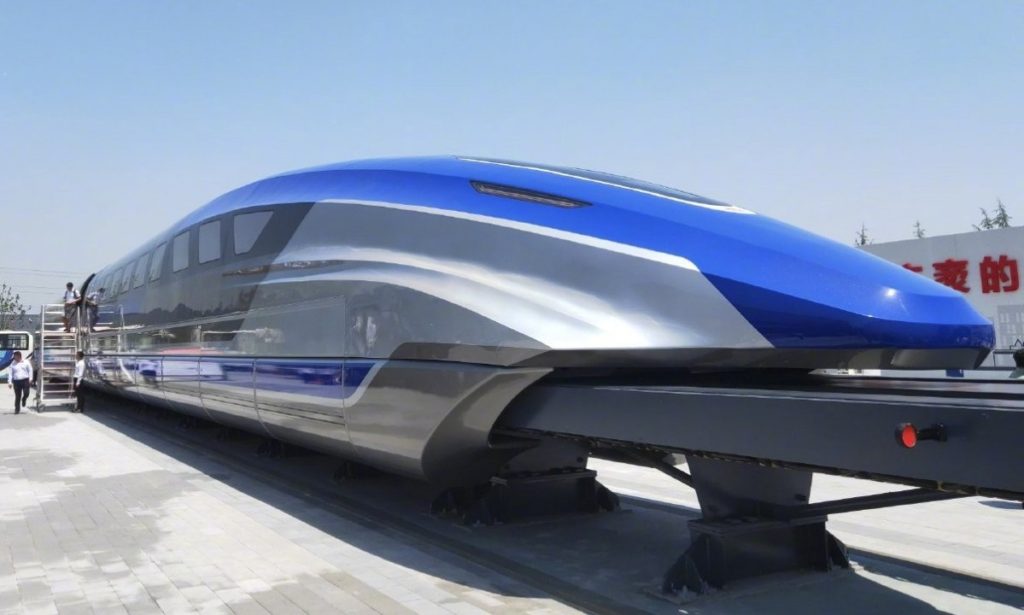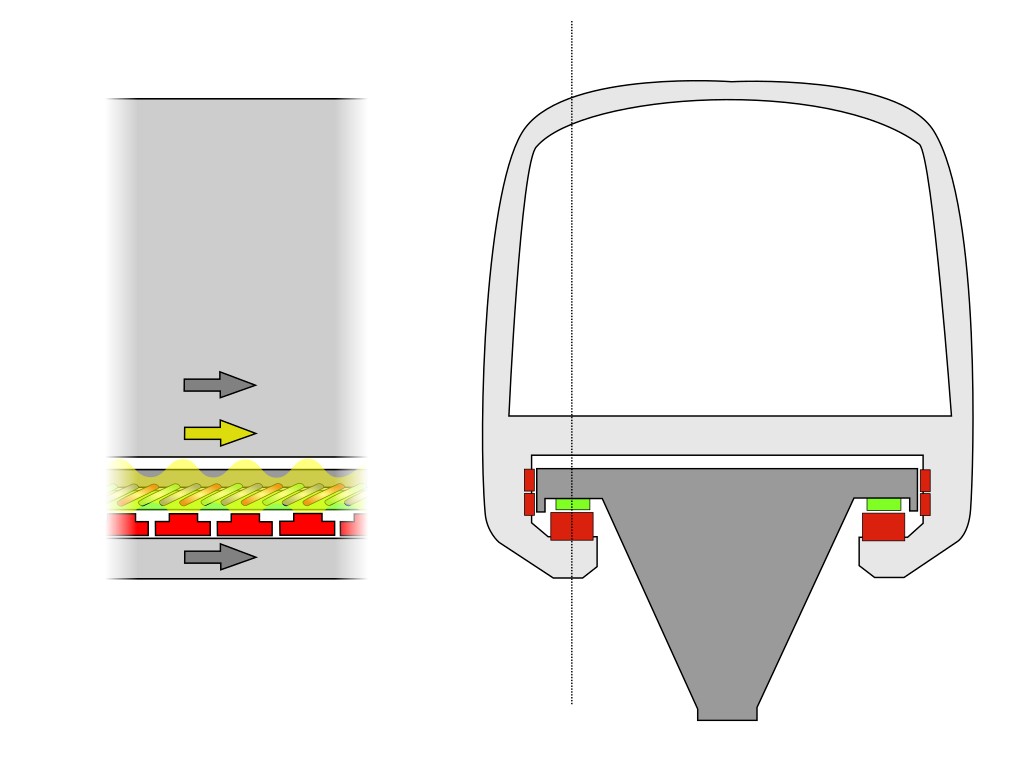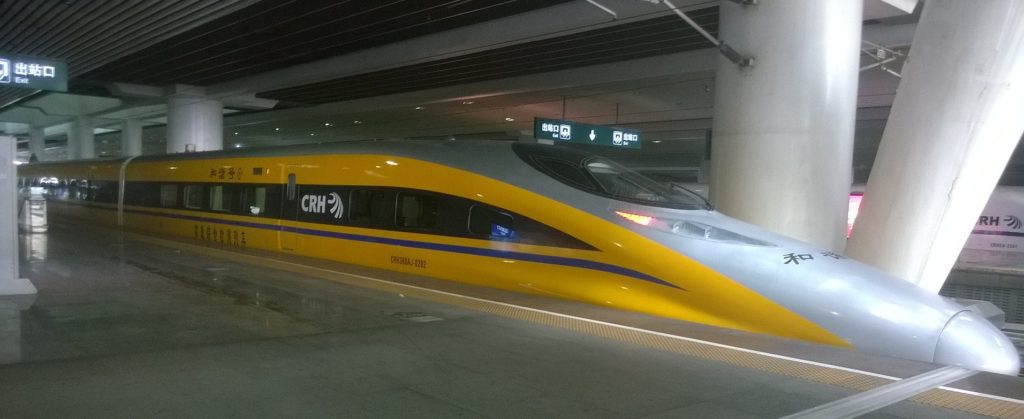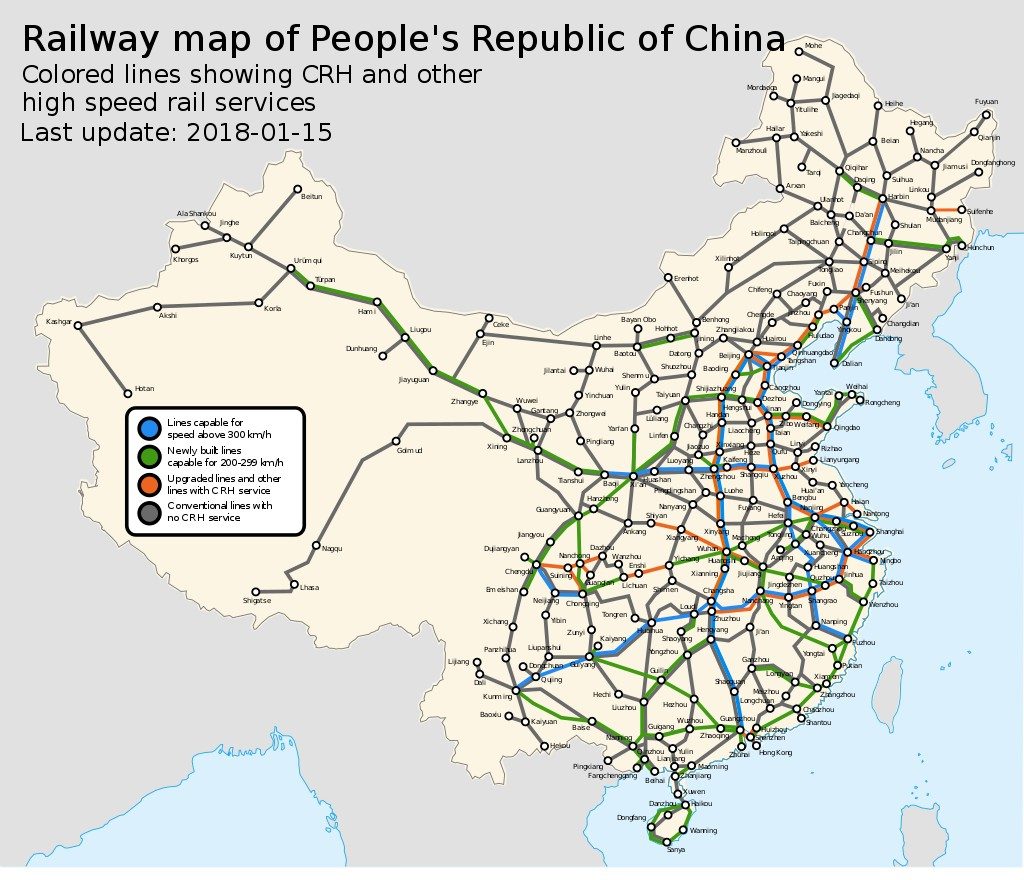By Tycho de Feijter for 6th Gear Automotive Solutions.
Haarlem, June 2019.

China has unveiled a prototype maglev train with a top speed of 600 kilometers per hour. The train uses a technology called magnetic levitation, maglev for short, whereby the train floats over the track, using a magnetic field. There is no friction; the train never touches the track. This makes a maglev train faster and much quieter than a conventional train.

Maglev system (electromagnetic suspension – EMS).
Electromagnets carry the train just above the track, pushing it forwards. A maglev train brakes by reversing the magnetic field, basically pushing the train in the ‘other direction’. As a back-up braking system, maglev trains have emergency wheels, fitted with brakes. The wheels are hidden in the undercarriage, like on an airplane. If the magnetic field fails, the train uses these brakes to stop.
The only commercial maglev train currently in operation is in China as well, connecting Shanghai Pudong International Airport with downtown Pudong District. The trajectory is just 30 kilometers long, and the train’s top speed is 431 kilometers per hour.

CRH380A
The new train is developed by state-owned China Railway Rolling Stock Corporation (CRCC), the country’s largest train maker, headquartered in Beijing. CRCC also makes most conventional trains for China’s high-speed railway network. These trains have an operational speed of 350 kilometers per hour. The fastest train, the CRH380A, has a tested top speed of 486 kilometers per hour.
CRCC claims that the new maglev train will be able to go from Beijing to Shanghai faster than an airplane. This is a dubious claim, as the company calculates a 4.5-hour total traveling time by airplane. The fastest actual flight time is 2 hours. Nevertheless, it sure will be fast. The high-seed railway-distance between Beijing and Shanghai is 1318 kilometers. Travel time by conventional high-speed train is 4 hours and 18 minutes. With a 600 km/h top speed, a maglev train would do the same distance in 2 hours and 19 minutes, just 19 minutes more than an airplane.

China’s railway network. Blue lines are the high-speed rails, capable of speeds of 300 km/h and up.
But this is purely theoretical, as maglev trains can’t run on conventional rails. Building a brand new maglev railway from Beijing so Shanghai would cost billions. For the moment, it seems unlikely that the Chinese government will commit to such an investment. The current high-speed railway network is only a decade old, and there is still much potential for faster conventional trains.
There may be some potential for maglev trains on shorter trajectories, or to remote areas of China not serves by the high-speed railway network. Other possible uses are for freight or for the military. CRCC says the first long-distance test runs with the 600 km/h maglev train are planned for 2021.